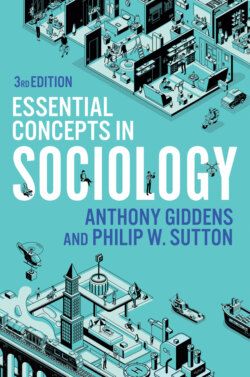Читать книгу Essential Concepts in Sociology - Anthony Giddens - Страница 50
Meaning and Interpretation
ОглавлениеIdeal types are ‘constructs’ – that is, they are created by researchers on the basis of criteria derived from their interest in a particular social phenomenon. For example, we could construct an ideal type of socialism, democracy, cybercrime, consumer society or moral panic. However, in making the construct, we do not aim to combine as many aspects of the phenomenon as possible in order to produce an accurate depiction of it. Because, Weber argued, sociology cannot replicate the experimental methods of the natural sciences, we need to find other ways of gaining valid knowledge of society, and the ideal type is one useful tool which helps us do that.
For example, if we want to understand the ‘new terrorism’ of al-Qaeda networks and the self-styled Islamic State (Daesh), we can identify some typical aspects from our observations – perhaps their global connections, loose organizational forms, disparate aims and preparedness to use extreme violence against civilian targets (Lister 2015). Then we can create our ideal type around these central features. Of course, real cases of the new terrorism will include more than just these elements, and, in some cases, one or more elements may be absent while others are more prominent. For example, Daesh actions in Syria and Iraq involved creating an effective army, rather than a loose network, that succeeded in temporarily taking and holding territory. However, in creating an ideal type we are intentionally creating a one-sided model, a pure form, which probably does not or could not exist in reality. Those people, cells and organizations involved in the new terrorism may actually behave in ways that diverge from our ideal type. But the point of the exercise is to highlight a logically derived form of the new terrorism which will enable us to compare it with older forms and pick out significant similarities and crucial differences among real-world cases much more easily. Ideal types are heuristic devices – research tools that sociologists use to devise hypotheses and make comparisons.
An ideal type is akin to a standpoint from which we can observe the social world, a reference point that enables the researcher to begin to formulate some realistic questions about the phenomena in question. Hence, ideal types can never be said to be true or false, and it was not Weber’s intention that they should be tested against empirical cases in the same way that might be the situation with scientific hypotheses, and then falsified if negative instances are found. Their value lies in the research that flows from them and the contribution they make to our understanding. If ideal types fail to give us any better grasp of reality or just do not work in generating further research questions and studies, they will simply be abandoned as, simply and literally, useless.
